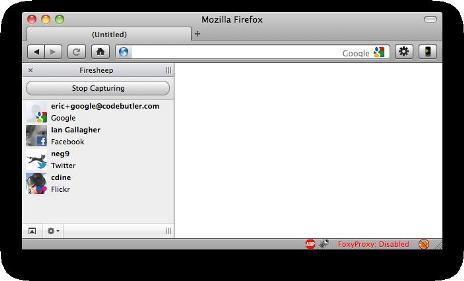

Our results show that FIRMA's clustering has very high precision (100% on a labeled dataset) and recall (97.7%). We have implemented FIRMA and evaluated it on two recent datasets comprising nearly 16,000 unique malware binaries. Compared with prior tools, FIRMA produces network signatures for each of the network behaviors of a family, regardless of the type of traffic the malware uses (e.g., HTTP, IRC, SMTP, TCP, UDP).

Its whats required to protect Facebook from Firesheep and similar cookie theft attacks, but it may break apps, because currently has the wrong cert. In this paper we present FIRMA, a tool that given a large pool of network traffic obtained by executing unlabeled malware binaries, generates a clustering of the malware binaries into families and a set of network signatures for each family. It has numerous anti-firesheep improvements Split the stricter parts of the Facebook rule into a 'Facebook+' rule. SWFUpload (version 2.2.0.1) which are used in older versions of the. Among these, network traffic is a powerful behavioral signature and network signatures are widely used by network administrators. jsobjectdetect javascript library based on ViolaJones and compatible with. The ever-increasing number of malware families and polymorphic variants creates a pressing need for automatic tools to cluster the collected mal-ware into families and generate behavioral signatures for their detection. Finally, we detail the Malicia dataset we have collected and are making available to other researchers. On average, an exploit server still lives for 4.3 days after a report. Caballero 61 % of the reports are not even acknowledged. SSH machine at IP Address, 127.0.0.1, the application first asks us to confirm. We describe the interaction with ISPs and hosting providers and monitor the result of the report. intentionally broke backward compatibility with the Python 2.x release. To understand how difficult is to takedown exploit servers, we analyze the abuse reporting process and issue abuse reports for 19 long-lived servers. Furthermore, we analyze the exploit polymorphism problem, measuring the repacking rate for different exploit types. We also observe operations that distribute multiple malware families and that pay-per-install affiliate programs are managing exploit servers for their affiliates to convert traffic into installations. To sustain long-lived operations, miscreants are turning to the cloud, with 60 % of the exploit servers hosted by specialized cloud hosting services. Our operational analysis reveals that although individual exploit servers have a median lifetime of 16 h, long-lived operations exist that operate for several months. We collect over time how exploit servers are configured, which exploits they use, and what malware they distribute, grouping servers with similar configurations into operations. In this paper, we propose a technique to identify exploit servers managed by the same organization. In the drive-by ecosystem, many exploit servers run the same exploit kit and it is a challenge understanding whether the exploit server is part of a larger operation. Drive-by downloads are the preferred distribution vector for many malware families.


 0 kommentar(er)
0 kommentar(er)
